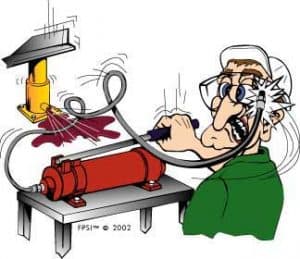Providing a safe working environment is essential, especially when using pneumatic tools and compressed air.
Many injuries are caused in factories and workshops by hose whip when the compressed air line is disconnected or bursts while still under pressure. The injury can be caused by the thrashing hose itself or blowing debris. The whip will continue to happen until the pressure is restricted.
There are a couple of ways to reduce the risk of hose whip;
1. When an incident starts, compressed air fuses engage and decrease the flow of air into the hose, allowing the pressure to equalise and stop the whip before it begins.
2. Shutoff valves are installed at the compressed air source and are set to a specific pressure cap. If the pressure reaches the limit, or the hose is damaged, the valve shuts off the airflow automatically.
How to Prevent Hose Whip
- Here are a few preventative measures you can take to reduce hose whip occurring:
- Check the connections whenever setting up air hoses to make sure they are secure
- Always hand tighten valves, regulators, and connections
- Never modify the nozzle
- If a hose breaks or becomes disconnected, immediately get out of the way
- Never attempt to grab the hose and control it; this is a common cause of injury
- Avoid sharp bends in the hose, which can damage the reinforcement
Watch the ROSS AIR-FUSE in action. It senses a broken hose and automatically reduces flow to minimise hose whip
If you would like to order any of our safety products or if you would like more information contact us today


